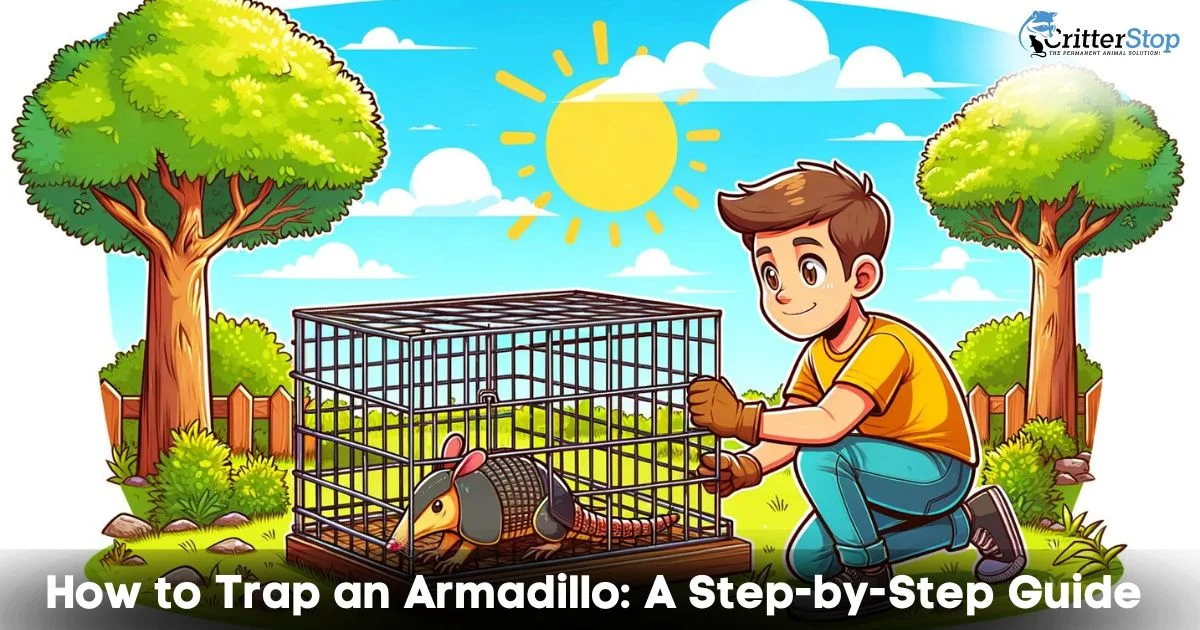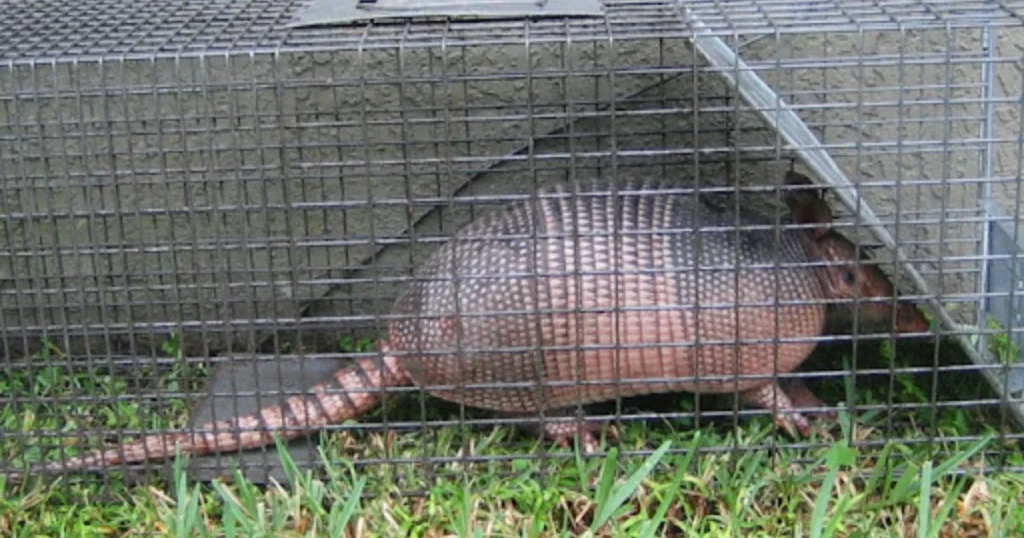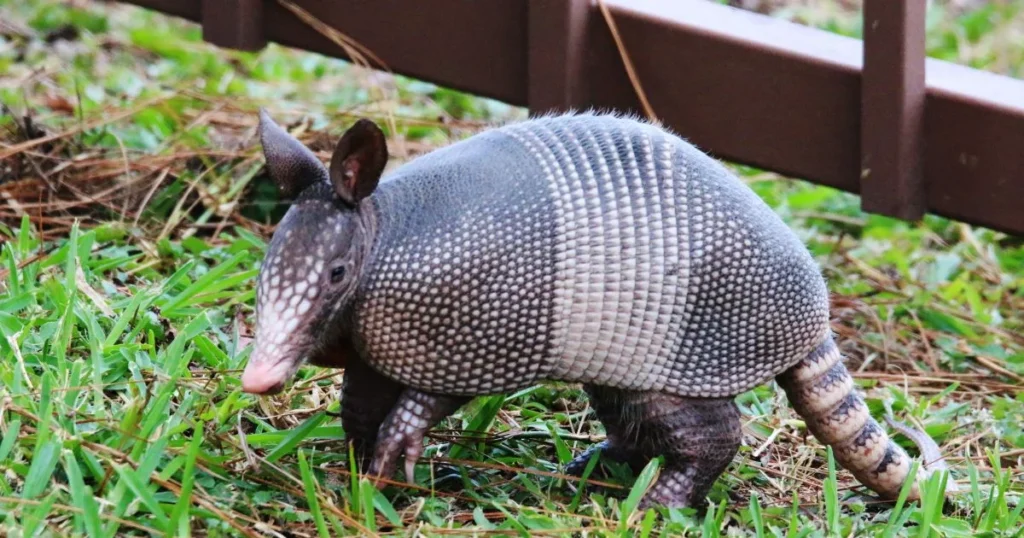
Armadillos are fascinating creatures that are often found in the southern regions of the United States. They are known for their tough, armored exterior and their ability to dig deep burrows in the ground. However, armadillos can also be a nuisance to homeowners and gardeners as they can cause damage to lawns and gardens while foraging for food. If you're looking to know how to trap an armadillo, you are in the right place.
Firstly, it's important to understand that trapping an armadillo can be a difficult task. These animals are wary of humans and can be difficult to catch. However, with the right tools and techniques, trapping an armadillo can be done safely and effectively. In this piece, we'll delve into several top strategies for trapping armadillos and offer tips on how to do it successfully.
Before attempting to trap an armadillo, it's crucial to verify its legality within your locality. Some states have laws that prohibit trapping certain types of animals, including armadillos. If it's legal to trap armadillos in your area, you'll need to gather the right equipment and choose the right location for your trap. Keep reading to learn more about how to catch an armadillo.

Armadillos are nocturnal animals that are usually active at night. They are known for their unique behavior of jumping straight up into the air when startled or frightened. This behavior is known as "jumping" or "startling". Armadillos are also known for their digging ability. They dig burrows for shelter and foraging. These tunnels can extend up to 15 feet in length and 5 feet deep.
Armadillos are solitary animals and do not live in groups. They have a reputation for territorial behavior and will protect their burrows from other armadillos. They are also known to be good swimmers and have the ability to remain underwater for as long as six minutes.
Armadillos are found in a variety of habitats, including forests, grasslands, and deserts. Armadillos are indigenous to the Americas, ranging from the southern United States to Argentina. They possess omnivorous habits, consuming insects, small creatures, and plant material. With a sharp olfactory sense, they adeptly sniff out their food sources.
Armadillos are known for their hard outer shell, which is made of bone and keratin. This shell protects them from predators, but it also makes them slow and cumbersome. Armadillos are not good climbers and are vulnerable to predators that can climb trees, such as some species of cats.
If you need to know when is the best time to catch an armadillo, the answer is: at night. Put some traps in the activity area and with some luck, you will succeed in catching them. Armadillos can be trapped using live traps baited with their favorite food, such as worms or insects. Positioning the trap close to the entrance of the burrow is essential and to cover the trap with leaves or dirt to make it less visible. Armadillos can also be deterred by fencing off areas where they are not wanted.
Before attempting how to trap a armadillo, it is important to understand the legal regulations and ethical considerations involved. In many states, it is legal to trap armadillos on your own property, but it is illegal to trap them on public land or on someone else's property without permission. It's equally crucial to consult with your local authorities to ensure that trapping armadillos is legal in your area.
When trapping armadillos, it is important to follow ethical guidelines as well. Armadillos are harmless creatures and should be treated with respect and care. Using humane traps that minimize harm or distress to the animal is imperative. Additionally, it is important to release the armadillo as soon as possible after capture, preferably in a natural habitat away from human populations.
To ensure that you are following both legal and ethical guidelines, it is recommended to consult with a professional wildlife removal service. These experts possess the essential expertise and experience to trap armadillos safely and humanely, while also adhering to all legal regulations.
In summary, trapping armadillos requires careful consideration of both legal regulations and ethical guidelines. Using humane traps and promptly releasing the captured animal is vital. It's advisable to seek assistance from a professional wildlife removal service to ensure adherence to all guidelines.

Before setting up a trap for an armadillo, it is important to choose the right trap. Armadillos are known to be strong and resilient, so it is important to select a trap that is sturdy and durable. A live trap is recommended, as it allows for the safe capture and release of the armadillo.
One option is a cage trap, which typically features a one-way door that allows the armadillo to enter but not exit. These traps are typically constructed from wire mesh and are available for purchase at hardware stores or online retailers. Another option is a box trap, which is similar to a cage trap but features a solid top and sides. This type of trap can be more difficult to set up, but it can also be more effective at trapping armadillos.
When choosing a trap, it's crucial to take into account the size of the armadillo you are trying to catch. Some traps may be too small for larger armadillos, while others may be too large for smaller ones. Considering the location where the trap will be placed is also essential, as certain traps may prove more effective in specific areas than others.
Once a trap has been selected, it is important to set up the trap area properly. Armadillos are known to be active at night, so it is best to set the trap in the evening and inspect it in the morning.
The trap should be placed in an area where armadillos are known to frequent, such as near a burrow or along a known pathway. Ensuring that the trap is stable and level is crucial, as armadillos may be hesitant to enter a trap that is unstable or unsteady.
To attract the armadillo to the trap, it is recommended to use bait such as earthworms, mealworms, or fruit. Position the bait at the rear of the trap, near the trigger mechanism. It is important to avoid handling the bait with bare hands, as armadillos have a sharp sense of smell and might be discouraged by the scent of humans.
By selecting the right trap and setting up the trap area properly, it is possible to successfully trap an armadillo. Remember to always handle the armadillo with care and release it in a safe location away from human habitation.
Selecting the appropriate bait is crucial when it comes to trapping an armadillo. Armadillos are omnivores, so they will eat both plant and animal-based food. However, they have a strong preference for insects and grubs. Therefore, it is recommended to use bait that contains insects or grubs.
Some effective bait options include:
It's essential to note that armadillos possess a keen sense of smell, thus using fresh bait is crucial. Avoid using bait that has gone bad or has a foul odor, as it may deter the armadillo from entering the trap.
Once the bait has been selected, it is important to place it in the right location. Armadillos are nocturnal creatures and are primarily active during the night. Therefore, it is recommended to set the trap in the evening and check it in the morning.
When setting the bait, it's vital to place it towards the back of the trap, away from the entrance. This will force the armadillo to enter the trap fully in order to reach the bait, increasing the chances of a successful capture.
It is also recommended to place the trap in an area where armadillos are known to be present. Look for signs of armadillo activity, such as burrows or digging, and set the trap nearby.
By using the right bait and placing it in the proper location, you can increase your chances of successfully trapping an armadillo. Remember to check your trap regularly and release the armadillo in a safe and legal location.

Capturing an armadillo can present a challenge, yet with the correct approach and technique, it can be accomplished effectively. This section outlines the steps involved in trapping an armadillo.
The best time to set the trap is during the early morning or late evening when armadillos are at their peak activity. Armadillos are nocturnal animals, and they tend to come out of their burrows during these times in search of food. It is important to choose a location where the armadillo is likely to pass by, such as near its burrow or along its regular route.
Once the trap is set, it is important to monitor it regularly. Check the trap every few hours to ensure that the armadillo has not been trapped for too long. Leaving an armadillo trapped for an extended period can cause it to become stressed, dehydrated, or even injured. When checking the trap, approach it quietly and slowly to avoid startling the armadillo.
Once the armadillo is trapped, it is important to handle it with care. Armadillos can harbor diseases like leprosy, hence it's advised to wear gloves while handling them. It is also important to release the armadillo as soon as possible in a safe and suitable location away from human habitation.
In summary, trapping an armadillo requires patience, careful planning, and monitoring. By choosing the right location and timing the trap setup correctly, you can enhance your likelihood of successfully trapping an armadillo. Remember to handle the armadillo with care and release it in a safe location to ensure its well-being.
Once you have successfully trapped an armadillo, it is important to handle it properly to ensure its safety and well-being. This section will cover some important steps to take after catching an armadillo.
When handling an armadillo, it is important to remember that they can carry diseases such as leprosy. Hence, it's advisable to wear gloves when handling them to avoid any potential health risks.
It is also important to handle the armadillo gently and avoid causing any unnecessary stress or harm. Armadillos have a strong sense of smell, so try to avoid touching them with your bare hands as much as possible.
If the armadillo is particularly agitated or aggressive, it might be optimal to reach out to a professional wildlife removal service for assistance.

Once you have safely and securely trapped the armadillo, it is time to know what to do with trapped armadillo, relocate and release it. It is important to release the armadillo in an area that is suitable for its survival, away from any potential dangers or hazards. In any case, always check with the local Texas Park and Wildlife representative to get permission to relocate this animal and more legal information.
When choosing a release location, look for an area with plenty of vegetation and natural cover, such as a wooded area or a park. Avoid releasing the armadillo near busy roads or areas with heavy human activity.
When releasing the armadillo, gently tip the trap on its side and allow the armadillo to exit on its own. It may take a few minutes for the armadillo to feel comfortable enough to leave the trap, so be patient and avoid making any sudden movements or loud noises.
In conclusion, handling and releasing an armadillo requires care and attention to ensure its safety and well-being. By adhering to the steps delineated in this section, you can safely trap, handle, and release an armadillo back into its natural habitat.
One of the most efficient methods to deter armadillos from entering your property is by making it less appealing to them. Armadillos are attracted to areas with loose soil, facilitating their ability to excavate for food. Therefore, it is recommended to keep your lawn well-maintained and free of debris and fallen leaves. You can also consider planting vegetation that armadillos do not like, such as prickly pear cactus or rose bushes.
Another way to modify your habitat is by removing any potential shelter or hiding places for armadillos. This includes piles of wood or rocks, as well as any unused equipment or vehicles. Armadillos are nocturnal animals, so it is important to make sure that your property is well-lit at night to deter them from entering.
If armadillos have already invaded your property, exclusion techniques can be used to keep them out. One effective method is to install a barrier around your property, such as a fence or wall. The barrier should be buried at least a foot deep to prevent armadillos from digging under it. Additionally, the barrier should be at least three feet high, as armadillos are capable of climbing.
Another exclusion technique is to install a one-way door on any existing burrows. This will allow armadillos to exit, but prevent them from re-entering. It is important to wait until the armadillo has left the burrow before installing the one-way door to avoid trapping it inside.
By putting these preventive measures into action, you can significantly decrease the likelihood of armadillos invading your property. However, if trapping becomes necessary, it is important to do so humanely and in compliance with local laws and regulations.
If trapping an armadillo seems too daunting of a task, it might be best to enlist the assistance of a professional wildlife removal service like Critter Stop. These services have the experience and equipment necessary to safely and effectively trap and relocate armadillos.
When selecting a wildlife removal service, it's crucial to verify that they are licensed and insured. This safeguards both you and the service provider in the event of any accidents or damages that may arise during the trapping process.
It is also important to inquire about the methods used by the service provider. Humane trapping methods should be used to ensure that the armadillo is not harmed during the process. The wildlife removal comapny should also be well-informed about the pertinent local laws and regulations regarding armadillo trapping and relocation.
Although professional assistance may involve expenses, it can ultimately save time and effort. Moreover, it guarantees the safe and humane relocation of the armadillo to an appropriate habitat.
Trapping an armadillo can be a daunting endeavor, yet with the appropriate techniques and tools, it can be accomplished effectively. By adhering to the steps detailed in this article, one can successfully know how to catch a armadillo without causing harm to the animal.
It is important to note that trapping an armadillo requires patience and persistence. It may take several attempts before one is successful in catching the animal. Nevertheless, with the correct approach, it is feasible to trap an armadillo in a humane and safe manner.
When setting up a trap, it is important to choose the right location and bait. Armadillos are attracted to insects, so using a bait that contains insects or worms can be effective. Moreover, positioning the trap near the armadillo's burrow or in a location frequented by the animal can heighten the likelihood of success.
Once the armadillo is caught, it is important to handle it with care. Armadillos can carry diseases, so wearing gloves and taking precautions when handling the animal is important. It is also important to release the armadillo in a secure location, distant from residential areas.
Overall, trapping an armadillo can be a challenging task, however, with the appropriate approach and tools, it can be achieved effectively and compassionately. By adhering to the steps delineated in this article, one can successfully capture an armadillo and release it in a secure location.
If you feel overwhelmed with all those steps to capture and remove an armadillo, at Critter Stop we have provided our armadillo trapping and removal services hundreds of times all over the Dallas and Fort Worth area. As a local company, we understand the necessities of homeowners, reason why our first step is to go to your property and conduct a free inspection to tailor a customized plan, especially for you. Contact us now at (214) 234-2616 to put your armadillo problem in our experts hands!
To trap an armadillo, one needs to set up a trap in a spot frequented by the animal. Placing the trap where the armadillo is prone to wander into it is crucial, such as near a burrow or along a known path. Armadillos are most active at night, so it is best to set the trap in the evening and check it in the morning.
To catch an armadillo in a live trap, one needs to use a bait that is appealing to the animal. Armadillos are known to be attracted to insects, such as mealworms or crickets. Once the armadillo enters the trap, it will activate the door to close, ensnaring the animal inside. It's essential to handle the trap with care and release the armadillo in a secure location, distant from residential areas.
One can construct a homemade trap for armadillos using a large plastic container or a metal cage. The container should be at least 2 feet long and 1 foot wide. Cut a hole in one end of the container and place a piece of wood or cardboard over the hole. Bait the trap with insects and place the trap near the armadillo's burrow or along a known path. When the armadillo enters the trap, it will cause the door to shut, capturing the animal within.
After successfully trapping an armadillo, it is important to release the animal in a safe location away from residential areas. Armadillos can carry diseases, so it is important to wear gloves and handle the trap carefully. It's also crucial to inspect the trap regularly to ensure that the animal is not confined for an extended period.
Armadillos are most active at night and are more likely to be caught during the warmer months of the year. They are known to be active in the early morning and late evening hours, making it optimal to set traps during these times.
To deter or remove armadillos from residential yards, one can use a variety of methods, including fencing, repellents, and habitat modification. Fencing can be employed to establish a barrier around the yard, while repellents can be used to discourage armadillos from entering the area. Habitat modification involves removing food sources and creating an environment that is less attractive to armadillos.
Visit our Critter Library and learn more about our furry friends